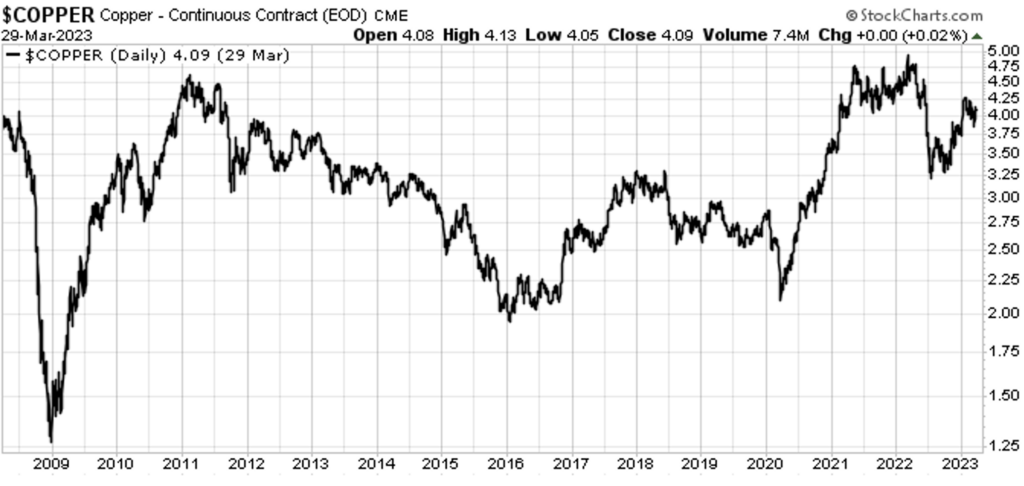

Spotlight Weekly – Investment U
I just spent three days at the 25th Annual Investment U (IU) Conference
I just spent three days at the 25th Annual Investment U (IU) Conferecence
This is the educational arm of The Oxford Club, a popular research newsletter publisher.
This was my fifth or sixth IU conference. In the past, I’ve spoken about oil, natural gas, pipelines, and gold miners. This year, I spoke about copper.
The reason is simple: The long-term trend in copper looks great, but the copper price moves on short-term news.
And I’m not the only one who thinks so.
A recent S&P Global report on copper says demand could double in 12 years. Vice Chairman of S&P Global, Daniel Yergin, said:
“The challenges this [shortage] poses – reminiscent of the 20th-century scramble for oil – may be accentuated by an even higher geographic concentration for copper resources and downstream industry to refine it into products.”
Yergin is a Pulitzer Prize-winning author and an expert on energy, geopolitics, and economics. His book The Prize is the preeminent history of the oil industry.
My copy is dog eared, marked up, and full of sticky notes. I trust him when he says copper looks a lot like oil in the last century.
His warning jumped off the page at me. It’s a terrifying thought that we are trading copper for oil. The report lays out this problem for the U.S.
In the worst-case projections, the country must import 67% of its refined copper needs by 2035. In the best-case projections, the U.S. will need to import 57% of its copper needs.
I had to chuckle at that. The U.S. needs all the help it can get.
That said, the copper price has not broken out the way we would expect it to:

A pound of copper cost more in 2011 than it does today. That will need to change.
That’s the opportunity that I laid out for us in our recent issue on Ivanhoe Mines (TSX: IVN). If you haven’t read that latest Spotlight report, I recommend that you do.
I said it at the IU conference and I’ll say it again here: Copper is a great commodity to own for the next three to five years at least.
Best Regards,
Matt Badiali



